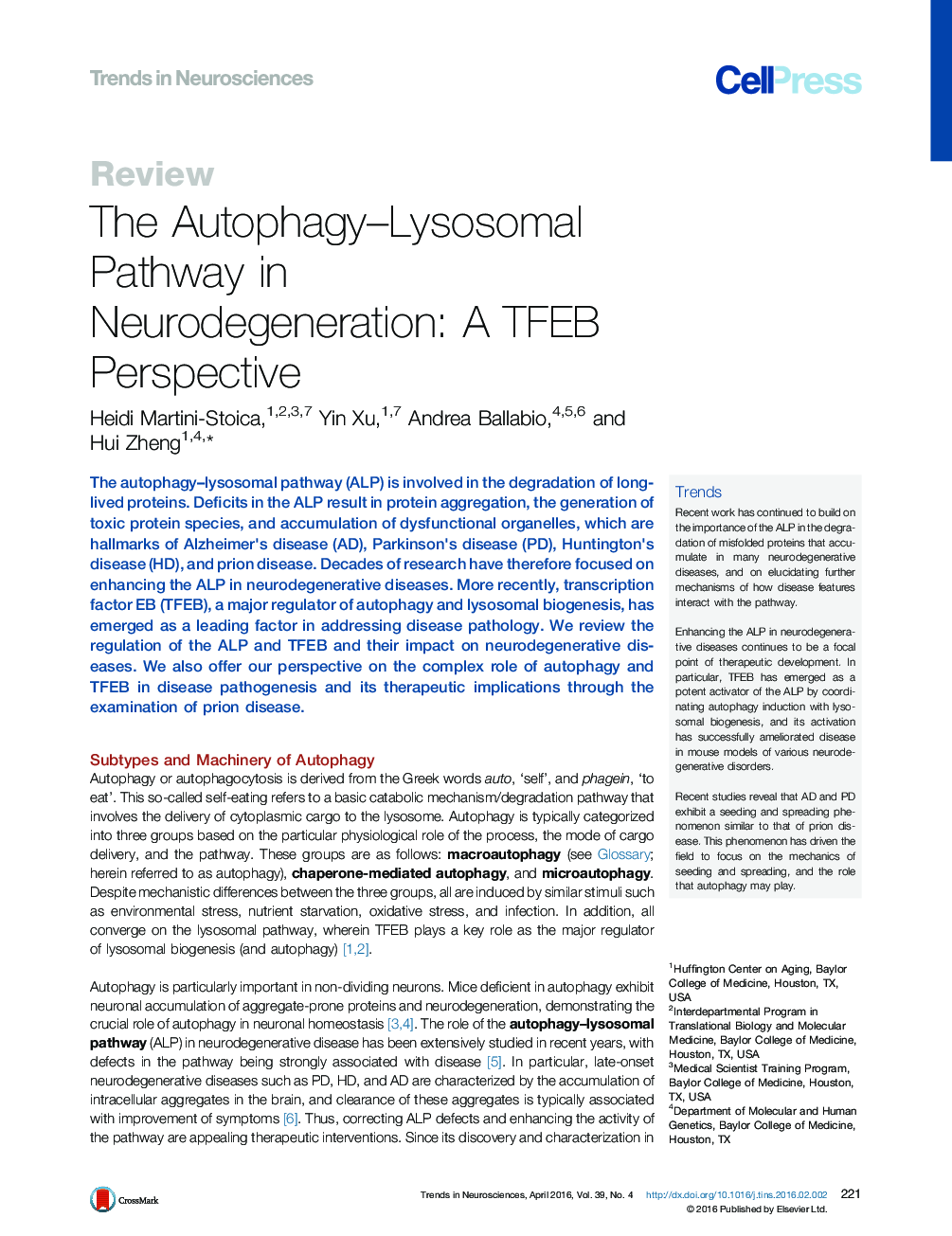| Article ID | Journal | Published Year | Pages | File Type |
|---|---|---|---|---|
| 4354149 | Trends in Neurosciences | 2016 | 14 Pages |
The autophagy–lysosomal pathway (ALP) is involved in the degradation of long-lived proteins. Deficits in the ALP result in protein aggregation, the generation of toxic protein species, and accumulation of dysfunctional organelles, which are hallmarks of Alzheimer's disease (AD), Parkinson's disease (PD), Huntington's disease (HD), and prion disease. Decades of research have therefore focused on enhancing the ALP in neurodegenerative diseases. More recently, transcription factor EB (TFEB), a major regulator of autophagy and lysosomal biogenesis, has emerged as a leading factor in addressing disease pathology. We review the regulation of the ALP and TFEB and their impact on neurodegenerative diseases. We also offer our perspective on the complex role of autophagy and TFEB in disease pathogenesis and its therapeutic implications through the examination of prion disease.
TrendsRecent work has continued to build on the importance of the ALP in the degradation of misfolded proteins that accumulate in many neurodegenerative diseases, and on elucidating further mechanisms of how disease features interact with the pathway.Enhancing the ALP in neurodegenerative diseases continues to be a focal point of therapeutic development. In particular, TFEB has emerged as a potent activator of the ALP by coordinating autophagy induction with lysosomal biogenesis, and its activation has successfully ameliorated disease in mouse models of various neurodegenerative disorders.Recent studies reveal that AD and PD exhibit a seeding and spreading phenomenon similar to that of prion disease. This phenomenon has driven the field to focus on the mechanics of seeding and spreading, and the role that autophagy may play.
